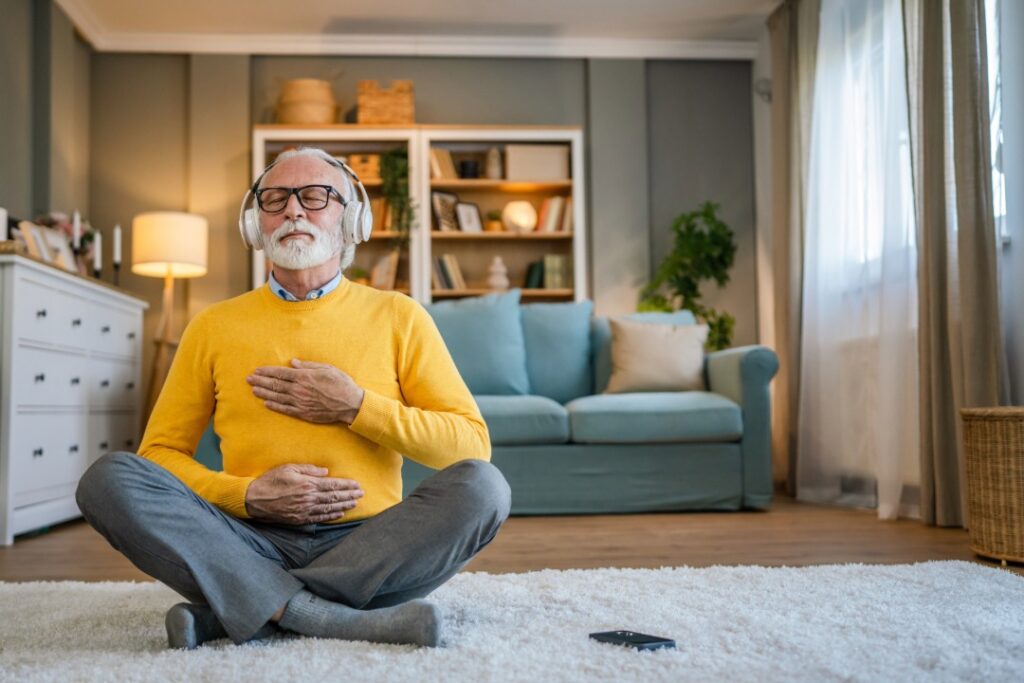
Working with Boundaries After Sexual Harassment or Assault
Practical tools to help you reconnect with yourself so you can show up fully for others.

Taking care of yourself can sometimes feel selfish. Yet the truth is you cannot pour from an empty cup. That is why this blog is inspired by mindhamok’s Grounding and Recovery Guide, a collection of more than 30 evidence-based techniques designed to help manage anxiety, regulate the nervous system, and find steadiness when life feels a little bit, well… shaky. These practical tools are suitable year-round, wherever you are, and will help you reconnect with yourself so you can show up fully for others.
Self-care is not just about spa days or taking time off. It is about giving your nervous system the support it needs, calming racing thoughts, and building resilience. When you are grounded and regulated, you can engage more authentically with the people and responsibilities that matter. And the good news is that you do not need hours. Small, consistent practices make a real difference. Cool right?!
The techniques in the Grounding and Recovery Guide are drawn from research in neuroscience, psychology, and trauma-informed care. They are grouped by themes such as physical arousal, rumination, sensory grounding, self-compassion, and social connection. Each method can be used alone or in combination, and regular practice maximises their benefits.
Let’s do this…
Your body often reacts before your mind does. A racing heart, tense muscles, or dizziness are signals from your nervous system saying, ‘Slow down and check in with me please!’ Responding intentionally is supported by evidence. Deep breathing, mindful awareness, and gentle movement reduces stress, regulates emotions, and improves focus.
Breathe deeply: Even a minute of slow, intentional breaths can signal your body to relax. Inhale, hold, exhale, and repeat. Research shows this engages the parasympathetic nervous system, the branch of our nervous system that is responsible for rest and recovery.
Tune into sensations: Notice what your body feels and what is around you. Pay attention to sounds, textures, or smells. Grounding your attention in sensory experience interrupts anxious thought cycles.
Move: Stretch, take a short walk, or practise progressive muscle relaxation, tensing and releasing muscles from toes to head. Evidence shows this releases tension and calms the nervous system.

Overthinking can feel like a never-ending carousel. Evidence-based approaches can slow it down.
Interrupt rumination: Pause and notice anxious thoughts without judgment. Label them as ‘just a thought’ and redirect your attention to your breath or surroundings. Notice the leaves of the tree above you.
Worry on purpose: Allocate 10–20 minutes to process concerns and worries, make a simple plan, then step away. Cognitive-behavioural research shows this prevents worry from dominating your day.
Reframe your thinking: Ask yourself, ‘Is this a fact or a story my mind is telling me?’ This distinction reduces anxiety and gives you more control.
Your senses are powerful anchors to the present. Using them intentionally can help interrupt stress, calm racing thoughts, and bring you back to the here and now.
5-4-3-2-1 technique: Notice five things you see, four you can touch, three you hear, two you can smell, and one you can taste. Studies show this method reduces panic and improves focus.
Cold or tactile sensations: Holding an ice cube or splashing your face with cold water stimulates the vagus nerve, helping your body shift out of fight-or-flight mode.
Comfort objects and safe place visualisation: Holding a familiar object or imagining a safe, detailed place provides immediate calm. Trauma-informed research supports this as an effective grounding technique. Where’s your happy place?
Being kind to yourself is essential. Self-compassion practices reduce stress, build resilience, and improve emotional regulation.
Kind self-talk: Replace critical thoughts with supportive phrases such as ‘I am doing my best!’ or ‘This feeling will pass.’
Hand on heart: Place a hand over your chest, take slow breaths, and speak reassuring words. This simple practice lowers stress and helps you feel safe.
Future-self reflection: Write a note from your future self offering encouragement and guidance. What do you wish you’d heard? Research shows this improves motivation and emotional insight.
Connection is a cornerstone of wellbeing. Social support reduces stress and strengthens emotional resilience.
Call a trusted friend: Even five minutes of conversation can help you feel grounded and safe.
Recall shared memories: Thinking about a positive experience with someone you love strengthens feelings of belonging and comfort.
Laughter, creativity, and play improve mood, reduce stress hormones, and enhance resilience. Fun is crucial!
Have fun: Watch a short comedy clip, dance to your favourite Dua Lipa song, or spend time on a hobby you enjoy.
Create: Scribble, draw, or write freely. Let your emotions flow without judgement.
Repetitive motion: Knitting, fidgeting, or using a stress ball engages your hands and nervous system in a soothing rhythm.
Your surroundings influence your emotional and physiological state. Small changes can have a significant impact.
Lighting: Soft, warm lighting promotes calm, while harsh or flickering light can increase tension.
Scent: Familiar or calming scents such as lavender or citrus act as sensory anchors and signal safety to your nervous system.
Self-care and presence for others go hand in hand. It starts with you. By caring for your body, regulating your thoughts, grounding yourself through your senses, practising self-compassion, and making space for connection and creativity, you can remain steady and resilient.
These techniques are grounded in research across neuroscience, psychology, and trauma-informed care. Practising them regularly helps you care for yourself, manage stress, and show up fully for the people who matter.
Here at mindhamok we believe in making space for small, consistent practices. When you are grounded and regulated, you can thrive personally and be fully present for others.
So, put your mind in a hammock and reconnect with your breath, body, and boundaries.

Practical tools to help you reconnect with yourself so you can show up fully for others.

Why comparison steals your joy & how to stay focused on your own unique journey.
We do not use any tracking or advertising cookies on this site. We use functional and necessary cookies to make the site work. By continuing to use this website, you consent to their use in accordance with our Cookie Policy
Accept